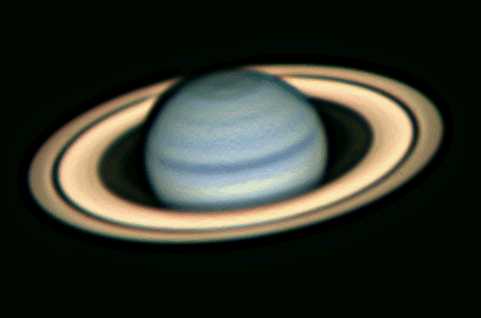Credit & Copyright: Nordic Optical Telescope
Explanation:
Saturn is the second largest planet in our
Solar System. Saturn has been
easily visible
in the sky since history has been recorded.
Galileo used one of the
first telescopes in 1610 to discover Saturn's rings,
which he first thought were moons.
Maxwell showed in 1856 that
Saturn's rings couldn't be a single solid,
since Saturn's own gravity would break it up.
Were
Saturn's rings assembled into a single body,
it would measure less than 100 kilometers across.
The origin of
Saturn's rings,
and of unusual radial patterns that appear on them called
spokes, are still unknown. The
above representative-color picture
was taken from Earth in infrared light. A robot spacecraft
Cassini
launched in 1997 will reach
Saturn in 2004.
1999 2000 2001 2002 2003 2004 2005 2006 2007 2008 2009 2010 2011 2012 2013 2014 2015 2016 2017 2018 2019 2020 2021 2022 2023 2024 2025 |
Yanvar' Fevral' Mart Aprel' Mai Iyun' Iyul' Avgust Sentyabr' Oktyabr' Noyabr' Dekabr' |
NASA Web Site Statements, Warnings, and Disclaimers
NASA Official: Jay Norris. Specific rights apply.
A service of: LHEA at NASA / GSFC
& Michigan Tech. U.
|
Publikacii s klyuchevymi slovami:
Saturn - ring - kol'ca Saturna - Saturn - infrakrasnoe izluchenie
Publikacii so slovami: Saturn - ring - kol'ca Saturna - Saturn - infrakrasnoe izluchenie | |
Sm. takzhe:
Vse publikacii na tu zhe temu >> | |
